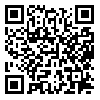Iranian traditional medicine (ITM) scholars have explained the structure and function of each organ based on clinical observations and past experiences. The skin is especially important due to apparent clinical manifestations serving as a convenient diagnosis tool. This study was aimed to evaluate the anatomy and physiology of the skin as presented in ITM School and compare with conventional medicine. Relevant keywords were searched in ITM reference books, Google scholar, PubMed, and Scopus. After extracting the data, the results were classified in terms of concepts and tables.
ITM scholars believe the embryonic origin of skin is similar to nervous tissue. In their view, the skin has a moderate temperament, and is a combination of fibers, nerve ends, muscles and vessels. Among the most important functions of the skin is the sense of touch, body temperature regulation, and excretion of wastes.
In conventional medicine, the skin consists of epidermis, dermis, and hypodermis layers. The embryonic origin of epidermis is the ectoderm. Protection and body temperature regulation, sensory activities, gas exchange, absorption of ultraviolet rays and disposal of excess body electrolytes are considered as the most important skin functions.
Overview of fetal origin, structure and function of the skin between these two schools of medicine interpreted in many ways, revealed many similarities.
Received: 2017/07/22 | Accepted: 2017/07/22 | Published: 2017/07/22
| Rights and permissions | |
 |
This work is licensed under a Creative Commons Attribution-NonCommercial 4.0 International License. |


